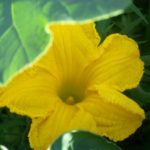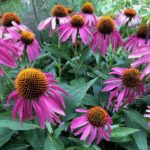
Flax to Fiber Experiment
As some of you know, I became intrigued by the whole process of turning flax into fiber after reading The Golden Thread. Of course, I had to try it myself. This is an update on the project that began in January.
In the spring, I put in a new 8 foot by 3 foot garden bed to devote to this project. And I ordered seeds from a company that sells flax for fiber. Most flax in seed catalogs is not the best for fiber production so I had to track down a source.
Since flax apparently likes the same weather as peas, I began planting in April. But to ensure a harvest, I staggered the planting. Denver gardening can be a challenge with hail, sweltering mid-day sun, marauding squirrels, and 50 degree temperate extremes in a 24 hour period. It seemed that staging the plantings would give me my best shot at actually producing flax even if I lost some plants. I sheltered the plants early in the season with hail cloth and then switched to shade cloth in June.

Harvest
It is now time to start harvesting at least some of the plants. If you harvest too soon, the fibers are not strong enough. If you harvest too late, the fibers are tougher and only good for weaving baskets. Bottom leaves should be turning yellow, flowers are gone, and seed pods should be formed but not completely dry. This seems straightforward except that I have plants with both flowers and dried seed pods and no yellow leaves. I remind myself this is an experiment. Plus, I would be totally happy if I could only weave a basket from my flax.
The process after harvesting, goes something like this ( and you have to love the descriptive words for each step):
- Retting – soaking the dried harvested flax so that water and micro-organisms rot away the stem to more easily release the fiber.
- Scutching – beating the flax to break up the outer unwanted plant material so that it will fall away
- Hackling – drawing the released plant fibers through combs to remove any remaining unwanted plant materials and shorter fibers.

Harvested flax can actually be stored for a while before beginning this process, which gives me time to continue to watch You Tube videos and figure out how to do it all. I’ve harvested three small bundles so far.
It is apparent how labor intensive and challenging this process could be if one was intending to create clothing. It is humbling to know that our ancestors developed this process and created fabric thousands of years ago. As I noted in my earlier blog post, taking the time to hold this awareness as I tend the flax plants connects me to this long history intertwined with our ancestors. I am grateful for their ingenuity and creativeness. I am also grateful that I can approach this project as a fun experiment rather than a necessity. I’ll post more on my experiment in future blogs.
More Details on Flax Production
Eight Step Process of Turning Flax Plant into Fiber


